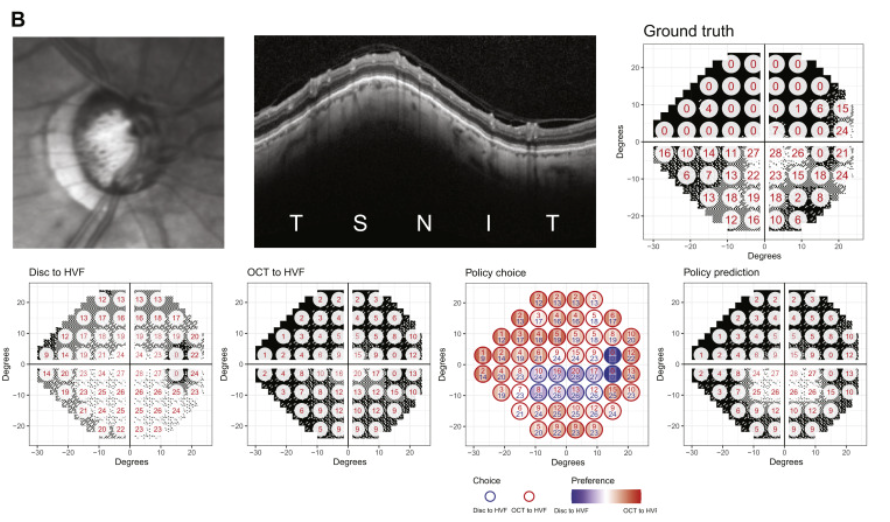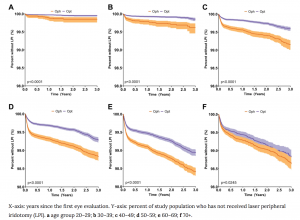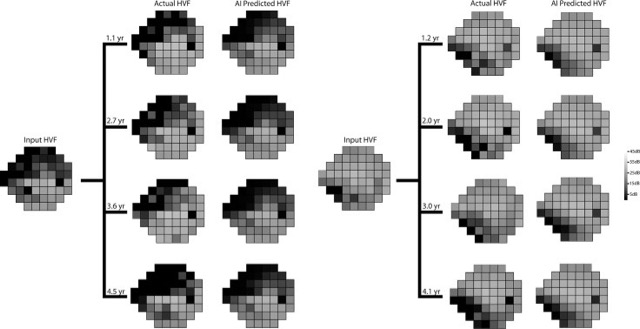In a new paper published in the journal Ophthalmology, Lee Lab members Yuka Kihara and Aaron Lee report the development of a novel deep learning approach to address a key problem in glaucoma research and treatment - predicting visual function from structural changes detected on optical coherence tomography (OCT). Physicians rely on visual field testing to assess whether glaucoma patients will progress to more severe disease, but the test is notoriously challenging for patients and the results can be inconsistent. Advanced retinal imaging such as OCT can reveal key structural changes in the retina and optic nerve, but previous methods for linking structural changes to visual function outcomes have been challenging. This approach provides a fully automated method for improving the prediction of standard automated perimetry sensitivity directly from structural imaging data and also enables artificial intelligence–derived structure–function mapping.
Continue reading "Policy-Driven, Multimodal Deep Learning for Predicting Visual Fields from the Optic Disc and OCT Imaging"Predictors of Narrow Angle Detection Rate-A Longitudinal Study of Massachusetts Residents Over 1.7 Million Person Years
In this large retrospective study published in the journal Eye, Dr. Cecilia Lee and her co-authors reviewed data from a Massachusetts claims database to assess how certain risk factors for glaucoma are detected and diagnosed during an eye exam. The authors compared outcomes from both ophthalmologists and optometrists to determine if there were any differences in how often they referred at-risk patients for further evaluation and treatment.
Primary angle closure glaucoma is one of the leading causes of blindness worldwide, affecting ~26% of the glaucoma population globally. Timely detection of occludable narrow angles (condition that can sometimes progress to primary angle closure glaucoma) in patients who are at risk is a key method of prevention. If indicated, patients can be referred for laser peripheral iridotomy to prevent more serious outcomes.
Continue reading "Predictors of Narrow Angle Detection Rate-A Longitudinal Study of Massachusetts Residents Over 1.7 Million Person Years"Using Deep Learning to Automate Goldmann Applanation Tonometry Readings
This study describes a novel method for automating Goldman Applanation Tonometry (GAT) measurements using a deep learning approach. GAT is the gold standard method for measuring intraocular pressure, which is an essential metric in the management of glaucoma.
To obtain accurate intraocular pressure measurements using traditional GAT, the user must use a dial to adjust the device to align two visible circular "mires", in order to determine the correct amount of force needed to create a fixed area of applanation on the surface of the eye, which is then used to calculate the intraocular pressure. This somewhat subjective alignment procedure can produce different results between users, and studies have found other unintended biases such as a preference for even-numbered readings on the dial. The goal of this study was to provide a method for obtaining more objective and reproducible GAT readings, by training a deep learning based algorithm to accurately recognize and measure the mires produced from a fixed application of force, and then use the measurements to calculate the intraocular pressure.
Continue reading "Using Deep Learning to Automate Goldmann Applanation Tonometry Readings"Smoking Is Associated with Higher Intraocular Pressure Regardless of Glaucoma.
Cigarette smoking is known to play a role in several ophthalmologic diseases, but reports about the effect of smoking on intraocular pressure and glaucoma have had conflicting results. In this study published in the journal Ophthalmology Glaucoma, Drs. Cecilia and Aaron Lee and their co-authors takes advantage of the American Academy of Ophthalmology IRIS (Intelligent Research in Sight) Registry, a database of 60+ million unique patients and 15,000 eye care providers to examine the connection between smoking history and intraocular pressure in more than 12 million smokers, past smokers, and nonsmokers. The authors controlled for other factors known to raise IOP (age, sex, cataract surgery, glaucoma surgery) and compared mean interocular pressure between patients with and without glaucoma according to their smoking history. They found that intraocular pressure was highest in the smoking group, a trend that was present in almost every year of life.
Forecasting future Humphrey Visual Fields using deep learning
Glaucoma is a leading cause of blindness worldwide, and the ability to quickly anticipate future disease progression may prevent unnecessary vision loss. Humphrey visual field testing is the standard method used to evaluate disease progression in glaucoma patients. This test uses linear regression of certain global eye measurements to monitor damage and predict risk for disease progression. It has some shortcomings in that does not take into account the spatial nature of visual field loss in glaucoma and relies on global indices rather than more focal measurements. Newer models have been developed that are better at detecting subtle changes and can identify disease progression earlier, but they require a multiple vision field tests to achieve accurate results. In this study, the authors aimed to develop a deep learning generative model to predict disease progression (to predict future visual fields with preserved spatial information) using minimal baseline visual field testing as input.
Continue reading "Forecasting future Humphrey Visual Fields using deep learning"




